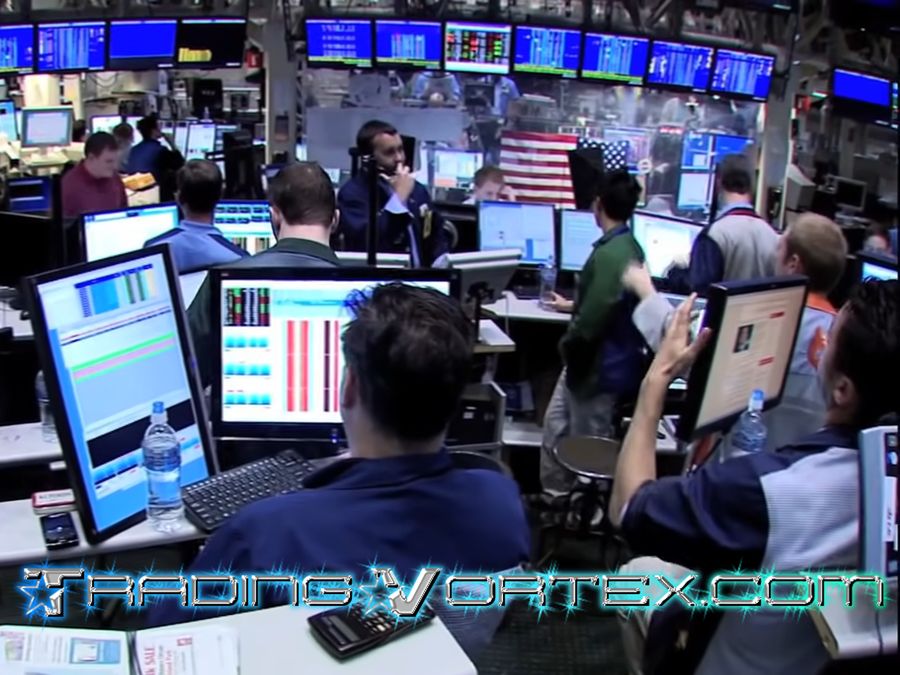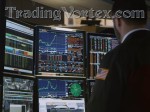Table Of Contents:
- Trader Loss Statistics:
Factor 1: Lack of Education in Trading.
Factor 2: Emotional Trading and Its Consequences.
Factor 3: Poor Risk Management.
Factor 4: The Perils of Overtrading.
Factor 5: Navigating Market Volatility.
Factor 6: Maintaining Trading Discipline.
Factor 7: Transaction Costs and Their Impact.
Factor 8: Realistic Expectations for Traders.
Factor 9: The Value of a Trading Strategy.
Conclusion:
Trader Loss Statistics:
Understanding Trader Loss Rates:
The oft-cited statistic that "95% of traders lose money" is a compelling narrative in the trading world. However, it's essential to recognize that this statistic, while frequently referenced, isn't as straightforward as it seems. It's subject to various factors and nuances that can influence its accuracy and reliability, rendering it a less than perfect reflection of the reality of trading across diverse markets.
Several factors can affect the accuracy and reliability of trader loss statistics:
- Sample Size and Selection of Traders: Different studies may utilize small or biased samples of traders, potentially failing to represent the entire trader population. For instance, some studies focus solely on active or day traders, whose characteristics and performance may differ from other trader categories.
- Time Period and Frequency of Measurement: Varying timeframes used to measure trading performance can impact results. Some studies employ short or extended periods, potentially overlooking market fluctuations. For instance, quarterly or annual assessments may not account for daily or weekly market dynamics.
- Definition and Calculation of Profitability and Loss: Studies may employ different criteria and formulas to determine trader profitability and loss. Factors such as whether they include trading costs, use gross or net returns, or compare performance to benchmarks can affect outcomes.
- Source and Quality of Data: The quality and source of data utilized in studies can vary. Self-reported or broker-reported data might introduce errors or biases, while incomplete or outdated data may not accurately reflect market conditions.
Given these complexities, a cautious and critical approach is warranted when interpreting such statistics, recognizing their limitations in fully capturing the intricacies of trading across diverse markets.
Historical Trends in Trading Performance:
Despite the challenges in measuring trader loss rates, studies have attempted to analyze historical trends in trading performance, shedding light on the evolving landscape of trading.
One influential study by Barber and Odean (2000) examined over 400,000 individual trading accounts from 1991 to 1996. They found that only 5.4% of traders were profitable after considering trading costs. Moreover, they observed a decline in trading performance over time, as traders faced increased competition from institutional investors and advanced trading technologies.
Another study by Coval et al. (2005) explored the performance of 78,000 day traders from 1995 to 1999. They reported that just 11.5% of day traders were profitable after accounting for trading costs. Similar to the previous study, they noted a decline in trading performance over time, attributed to heightened market volatility and reduced liquidity.
In a more recent analysis, Linnainmaa et al. (2019) examined over 65 million trades spanning from 1999 to 2015. Their findings revealed that merely 2% of traders achieved profitability after accounting for trading costs. This study also confirmed the trend of diminishing trading performance over time, as traders grappled with greater market efficiency and reduced predictability.
Variability in Success and Loss Rates:
While the prevailing narrative suggests that most traders lose money, it's important to note that there is considerable variability in success and loss rates among different types of traders. Several factors influence these rates, including education, experience, trading strategies, risk management, and market conditions.
Studies have attempted to identify these influencing factors:
- A study by Grinblatt and Keloharju (2000) revealed that Finnish investors with higher education levels achieved better returns compared to those with lower education levels.
- Calvet et al. (2009) found that Swedish investors with more experience tended to have higher returns than their less experienced counterparts.
- Garvey and Murphy's study (2004) of U.S. day traders showed that those who employed technical analysis strategies outperformed those who relied on fundamental analysis.
- Lo et al. (2010) discovered that U.S. day traders who used stop-loss orders exhibited better returns than those who did not implement such risk management measures.
- Korniotis and Kumar (2011) observed that U.S. investors who traded in bullish market conditions generally achieved higher returns compared to those trading during bearish market phases.
Factor 1: Lack of Education in Trading.
Trading in financial markets is often regarded as a high-stakes game where knowledge is not just power but also a vital safeguard against significant financial losses. A fundamental factor contributing to the loss of capital for many traders is the lack of proper education in the art and science of trading.
The Impact of Education on Trading Outcomes:
Education in trading extends far beyond merely knowing how to execute a trade. It encompasses understanding financial instruments, market dynamics, trading strategies, risk management techniques, and even the psychological aspects of trading. Here's how a lack of education can adversely affect trading outcomes:
- Poor Decision-Making: Trading without a solid educational foundation can lead to uninformed decisions. Traders may not understand the factors influencing asset prices or how to analyze market data effectively. This lack of knowledge can result in buying or selling decisions based on emotions or hearsay rather than sound analysis.
- Inadequate Risk Assessment: Education is crucial for comprehending risk and reward in trading. Traders without proper education may not accurately assess the potential risks associated with their trades. This can lead to overly aggressive positions or a lack of risk management strategies, exposing them to substantial losses.
- Lack of Trading Strategy: Education provides traders with the tools to develop and implement effective trading strategies. Without this knowledge, traders may engage in random or impulsive trading, relying on luck rather than a well-thought-out plan. This lack of strategy can result in inconsistent performance and significant losses.
- Inefficient Use of Resources: Trading involves various resources, including time and capital. Uneducated traders may misuse these resources, engaging in excessive trading or failing to capitalize on profitable opportunities due to a lack of market understanding.
Supporting Evidence: How Education Affects Performance?
Numerous studies and industry experts have highlighted the direct correlation between education and trading performance:
- A study conducted by the Financial Industry Regulatory Authority (FINRA) found that 75% of active traders had no formal education in finance or economics. These traders were more likely to make poor decisions, leading to losses.
- Research by the Investment Company Institute (ICI) revealed that investors who sought professional financial advice and had a better understanding of financial markets tended to achieve more favorable investment outcomes.
- Expert traders often emphasize the importance of continuous learning and education in trading. They argue that staying informed about market developments, new strategies, and risk management techniques is essential for long-term success.
Tips for Improving Trading Education and Skills:
- Formal Education: Consider enrolling in courses or programs related to trading and finance. Many reputable institutions offer online courses that cover a wide range of trading topics.
- Read Widely: Books, journals, and reputable financial news sources can provide valuable insights into trading. Familiarize yourself with the writings of successful traders and financial experts.
- Practice with Simulators: Before risking real capital, use trading simulators or demo accounts provided by brokers. This allows you to apply your knowledge in a risk-free environment.
- Seek Mentorship: Connect with experienced traders or seek a mentor who can provide guidance and share practical insights.
- Stay Informed: Continuously educate yourself about market trends, economic indicators, and trading strategies. Attend webinars, seminars, and workshops to expand your knowledge.
- Risk Management: Learn and implement risk management techniques to protect your capital. Understanding how to set stop-loss orders and position sizing is crucial.
- Psychological Training: Educate yourself about the psychological aspects of trading, such as managing emotions and maintaining discipline during volatile markets.
In conclusion, a lack of education in trading can significantly contribute to trader losses. Traders who invest in their education and continuously seek to improve their knowledge and skills are better equipped to navigate the challenges of financial markets and enhance their chances of achieving consistent profits.
Factor 2: Emotional Trading and Its Consequences.
Emotions are a powerful force in human decision-making, and nowhere is this more evident than in the world of trading. Factor 2 delves into one of the most prevalent challenges traders face: emotional trading and its far-reaching consequences.
Emotional Trading: A Common Pitfall.
Emotional trading refers to the practice of making trading decisions driven by emotions rather than rational analysis and well-thought-out strategies. It's a pitfall that even seasoned traders can fall into, and it can manifest in various ways:
- Overconfidence: After a series of successful trades, traders may become overconfident in their abilities. This overconfidence can lead to reckless decisions, excessive risk-taking, and larger position sizes, ultimately resulting in significant losses when the market turns against them.
- Fear and Panic: On the flip side, traders who experience losses or adverse market movements may succumb to fear and panic. In such moments, they may hastily exit trades, often at the worst possible time, locking in losses that could have been avoided with a rational approach.
- Revenge Trading: Revenge trading occurs when traders attempt to recoup losses by making impulsive, emotionally charged trades. This behavior can lead to a vicious cycle of mounting losses as traders chase after unrealized profits.
- Lack of Discipline: Emotional trading can erode discipline, causing traders to deviate from their carefully crafted trading plans. They may abandon stop-loss orders or fail to stick to predetermined exit strategies.
- Impatience: Impatience can drive traders to seek immediate results. This mindset can lead to premature exits or entries, ignoring the importance of letting trades develop according to their strategies.
Supporting Evidence: Emotional Trading's Impact.
The impact of emotional trading on trading performance is well-documented and supported by numerous studies and market experts:
- A study published in the Journal of Finance by Barber and Odean (2000) found that individual investors who traded more frequently tended to have lower returns. This behavior was attributed to overconfidence and excessive trading driven by emotions.
- Research conducted by Brad M. Barber and Terrance Odean, titled "Trading Is Hazardous to Your Wealth", highlighted that emotional trading and frequent portfolio turnover can significantly reduce overall returns.
- Behavioral finance studies have consistently shown that investors often make decisions based on fear and greed, which can lead to suboptimal results. Emotional responses to market events often result in buying high and selling low, the exact opposite of a successful trading strategy.
Strategies for Emotional Management in Trading:
Overcoming emotional trading requires discipline and a set of strategies to manage and mitigate emotional responses:
- Develop a Trading Plan: Having a well-defined trading plan with entry and exit strategies, risk management rules, and predefined goals can help reduce impulsive decision-making.
- Set Stop-Loss Orders: Implementing stop-loss orders for every trade can limit potential losses and prevent emotional decisions in the heat of the moment.
- Use Position Sizing: Determine the appropriate position size for each trade based on risk tolerance and account size. This prevents the temptation to go all-in on a single trade.
- Practice Mindfulness: Awareness of your emotional state while trading is crucial. Regularly check in with your emotions and take breaks if necessary to regain a clear mindset.
- Keep a Trading Journal: Record your trades, emotions, and the reasoning behind your decisions. Reviewing your journal can help identify patterns of emotional trading and improve self-awareness.
- Utilize Technical Analysis: Relying on technical indicators and chart analysis can provide a more objective basis for trading decisions, reducing the influence of emotions.
- Seek Support: Consider joining trading communities or seeking the guidance of a mentor. Sharing experiences and learning from others can help manage emotional responses.
In conclusion, emotional trading is a common pitfall that can significantly contribute to trader losses. Recognizing the emotional triggers and implementing strategies to manage and mitigate these emotions is essential for long-term success in the trading world.
Factor 3: Poor Risk Management.
Effective risk management is often the differentiator between successful traders and those who experience significant losses. Factor 3 delves into the critical aspect of trading: risk management, and the consequences of its neglect.
Risk Management: A Crucial Component.
Risk management is the cornerstone of responsible trading. It involves strategies and techniques aimed at minimizing potential losses while maximizing the potential for gains. Poor risk management can result in significant financial setbacks for traders. Here's why it's crucial:
- Capital Preservation: Sound risk management safeguards a trader's capital, preventing substantial losses that can be difficult to recover from.
- Emotion Control: A well-thought-out risk management plan helps control emotions. Traders who don't manage risk are more likely to make impulsive decisions driven by fear or greed.
- Consistency: Risk management ensures consistent trading. It helps traders avoid overexposing themselves to volatile markets, maintaining a steady approach regardless of market conditions.
- Position Sizing: Proper risk management dictates the size of each trade relative to the trader's overall portfolio. This prevents large, disproportionate bets that can lead to catastrophic losses.
Supporting Evidence: Risk Management's Significance.
The significance of risk management in trading is substantiated by numerous studies and industry experts:
- Nobel laureate Harry Markowitz's Modern Portfolio Theory emphasizes the importance of diversification and risk management in achieving optimal portfolio returns while minimizing risk.
- Van Tharp's "Position Sizing" strategies underline the essential role of risk management in determining the size of trading positions to control risk effectively.
- A study published in the Journal of Finance by Barber and Odean (2000) found that individual investors who employed poor risk management and traded frequently experienced lower returns, highlighting the detrimental impact of neglecting this aspect of trading.
Tools and Techniques for Effective Risk Management:
To implement effective risk management in trading, traders can employ various tools and techniques:
- Stop-Loss Orders: Utilize stop-loss orders to limit potential losses on each trade. Set these orders at predefined levels that align with your risk tolerance and trading strategy.
- Position Sizing: Determine the appropriate position size for each trade based on your risk appetite and overall portfolio size. This prevents overexposure to individual trades.
- Diversification: Avoid concentrating your capital in a single asset or asset class. Diversification spreads risk across multiple assets, reducing the impact of a poor-performing investment.
- Risk-Reward Ratios: Calculate and consider the risk-reward ratio for each trade. Ensure that potential gains justify the risk taken on a trade.
- Portfolio Allocation: Allocate a specific percentage of your overall portfolio to each trading strategy or asset class. This helps balance risk across your entire investment portfolio.
- Continuous Monitoring: Regularly review and adjust your risk management strategies as market conditions change. Stay informed about macroeconomic events and news that could impact your investments.
- Education: Invest in learning about different risk management techniques and how they apply to your trading style. Books, courses, and mentorship can provide valuable insights.
In conclusion, poor risk management is a leading cause of trader losses. Recognizing the significance of risk management, implementing effective strategies, and continually improving risk management skills are essential for achieving consistent and sustainable trading success.
Factor 4: The Perils of Overtrading.
Overtrading, a common pitfall in the world of trading, represents a scenario where traders engage in excessive buying and selling, often beyond their risk tolerance and financial capacity. This factor explores the dangers associated with overtrading and its detrimental impact on trading success.
Overtrading: A Capital-Draining Habit.
Overtrading can have a profound impact on traders and their portfolios. Here's why it poses a significant risk:
- Depletion of Capital: Excessive trading often leads to high transaction costs, including commissions, spreads, and fees. This can swiftly erode a trader's capital, leaving them with fewer resources to withstand market fluctuations.
- Emotional Exhaustion: Overtrading can be emotionally taxing. Constantly monitoring the markets, making rapid decisions, and experiencing frequent wins and losses can lead to stress and anxiety, impairing decision-making.
- Loss of Focus: Overtrading can distract traders from their overall trading strategy and goals. They may abandon their carefully considered plans in favor of impulsive short-term opportunities.
- Reduced Quality of Trades: The rush to enter multiple trades can result in lower-quality setups. Overtraded positions are often based on minimal analysis, increasing the likelihood of losses.
Supporting Evidence: The High Costs of Overtrading.
The detrimental effects of overtrading are well-documented in trading literature and supported by market data:
- A study published in the Journal of Finance by Barber and Odean (2000) found that individual investors who traded frequently tended to experience lower returns, partially due to the transaction costs associated with overtrading.
- Research by Brad M. Barber and Terrance Odean, titled "Trading Is Hazardous to Your Wealth", underlines the negative impact of frequent trading on overall returns. They concluded that high trading activity often leads to suboptimal outcomes.
- Market experts often emphasize the importance of patience and discipline in trading. Overtrading is viewed as a manifestation of impulsive behavior that can hinder long-term success.
Rules for Avoiding Overtrading and Preserving Capital:
To prevent the perils of overtrading and preserve capital, traders can adopt specific rules and strategies:
- Set Clear Trading Goals: Establish clear and achievable trading goals. Define the number of trades you intend to make in a day or week, and stick to this plan.
- Use a Trading Journal: Maintain a trading journal to record each trade's rationale and outcome. Reviewing your journal can help identify patterns of overtrading.
- Implement Risk Management: Set strict risk management rules, including stop-loss orders and maximum risk per trade. Ensure that each trade aligns with your risk tolerance.
- Wait for Quality Setups: Exercise patience and discipline. Only enter trades that meet your predefined criteria and provide a favorable risk-reward ratio.
- Limit Trading Hours: Establish specific trading hours and avoid monitoring the markets outside of these times. This can help reduce the temptation to overtrade.
- Focus on Long-Term Goals: Shift your focus from short-term gains to long-term success. Understand that trading is a marathon, not a sprint, and avoid chasing quick profits.
- Seek Mentorship: Consider seeking guidance from experienced traders or mentors who can provide insights and accountability to prevent overtrading.
In conclusion, overtrading represents a significant risk for traders, often leading to capital depletion and emotional exhaustion. By adhering to strict rules, maintaining discipline, and focusing on quality setups, traders can avoid this pitfall and preserve their capital for more sustainable and profitable trading.
Factor 5: Navigating Market Volatility.
Market volatility, characterized by rapid price fluctuations and unpredictable shifts in asset values, presents both opportunities and risks for traders. Factor 5 explores the challenges posed by market volatility, how it affects trading outcomes, and strategies for thriving in volatile markets.
The Challenge of Market Volatility:
Market volatility can be a double-edged sword for traders. While it can create opportunities for profit, it also introduces several challenges:
- Increased Risk: Volatile markets are inherently riskier, as price movements can be sudden and dramatic. Traders who are unprepared may face significant losses.
- Emotional Stress: Rapid market fluctuations can trigger emotional responses, leading to impulsive decisions. Traders may panic during downturns or become overly optimistic during upswings.
- Unpredictability: Volatile markets can be unpredictable, making it challenging to apply traditional technical or fundamental analysis effectively. Trends may be short-lived, and sudden reversals can occur.
- Margin Calls: In highly volatile markets, traders using leverage or margin may be at risk of margin calls, requiring them to deposit additional funds or close positions at unfavorable prices.
Supporting Evidence: How Volatility Affects Trading?
The impact of market volatility on trading outcomes is well-documented, with historical events and studies providing valuable insights:
- The 2008 financial crisis is a prime example of extreme market volatility. The collapse of major financial institutions and sharp declines in stock prices resulted in significant losses for traders and investors.
- The VIX (Volatility Index), often referred to as the "fear gauge," measures market volatility. During periods of heightened volatility, such as the COVID-19 pandemic in 2020, the VIX spiked, indicating increased market uncertainty.
- Research by financial experts has shown that traders who can adapt to volatile market conditions and implement effective risk management strategies are better positioned to capitalize on opportunities and mitigate losses.
Strategies for Thriving in Volatile Markets:
Navigating volatile markets requires a combination of strategies and skills to manage risk and capitalize on opportunities:
- Risk Management: Effective risk management is crucial in volatile markets. Set tight stop-loss orders to limit potential losses, and adjust position sizes to account for increased volatility.
- Diversification: Diversify your trading portfolio across different assets or asset classes to spread risk. Some assets, like precious metals, may perform well during times of market turbulence.
- Adaptability: Be prepared to adjust your trading strategy based on market conditions. Flexibility is key in volatile markets, where trends can change rapidly.
- Volatility Indicators: Utilize technical indicators designed to measure volatility, such as the Average True Range (ATR) or Bollinger Bands. These can help identify potential entry and exit points.
- News and Events: Stay informed about economic and geopolitical events that could impact markets. Be prepared for major announcements and have a plan in place to react.
- Scaling In and Out: Consider scaling into positions gradually to avoid entering the market all at once. Scaling out of positions can also help capture profits during volatile price swings.
- Emotional Discipline: Maintain emotional discipline by adhering to your trading plan and avoiding impulsive decisions driven by fear or greed.
In conclusion, market volatility presents both challenges and opportunities for traders. By adopting effective risk management, remaining adaptable, and staying informed, traders can thrive in volatile markets and position themselves for success while mitigating potential losses.
Factor 6: Maintaining Trading Discipline.
Discipline is a cornerstone of successful trading, yet it's a factor that many traders struggle to maintain consistently. Factor 6 delves into the critical role of discipline in trading, its impact on trading performance, and habits that foster consistent discipline.
Discipline's Role in Successful Trading:
Discipline in trading refers to the ability to adhere to a well-defined trading plan, execute strategies consistently, and manage emotions effectively. It plays a pivotal role in trading success for several reasons:
- Emotion Control: Discipline helps traders manage emotions such as fear, greed, and impulsivity. Emotional decisions can lead to costly mistakes.
- Consistency: Maintaining discipline ensures that traders consistently follow their trading plans and strategies. This consistency fosters reliability and predictability in trading outcomes.
- Risk Management: Discipline is closely tied to risk management. It ensures that traders stick to their predetermined risk-reward ratios, stop-loss orders, and position sizing rules.
- Avoiding Overtrading: Discipline prevents overtrading, a common pitfall that can deplete capital quickly. Traders with discipline adhere to their predefined trade limits.
Supporting Evidence: Discipline and Trading Performance.
The significance of discipline in trading is supported by empirical evidence and insights from market experts:
- A study by Barber and Odean (2000), titled "Trading Is Hazardous to Your Wealth", highlighted that traders who displayed discipline and traded less frequently tended to achieve better returns. The study emphasized the importance of avoiding impulsive trading behaviors.
- Seasoned traders often stress the role of discipline in maintaining a long-term perspective. By adhering to their strategies and not letting short-term losses cloud their judgment, disciplined traders can navigate challenging market conditions.
- Notable investors like Warren Buffett have attributed their success to discipline. Buffett's disciplined approach to value investing has consistently generated impressive returns over the decades.
Habits for Consistent Discipline:
Developing and maintaining discipline in trading requires the cultivation of specific habits:
- Trading Plan: Create a comprehensive trading plan that includes entry and exit strategies, risk management rules, and predefined goals. Refer to this plan before every trade.
- Emotional Awareness: Continually monitor and assess your emotional state while trading. Recognize when emotions may be influencing your decisions and take steps to regain a rational mindset.
- Stick to the Plan: Commit to following your trading plan without deviation. Avoid making impulsive decisions based on short-term market movements.
- Journaling: Keep a detailed trading journal to record each trade, including the rationale behind it and your emotional state at the time. Review your journal regularly to identify areas for improvement.
- Continuous Learning: Invest in ongoing education and self-improvement. Stay updated on market developments, new trading strategies, and psychological aspects of trading.
- Risk Management: Implement strict risk management practices, including setting stop-loss orders and adhering to position sizing rules. These practices help maintain discipline in managing risk.
- Routine and Consistency: Establish a daily trading routine that includes specific trading hours, analysis, and review. Consistency in your approach reinforces discipline.
In conclusion, maintaining trading discipline is a crucial factor in achieving success as a trader. By emphasizing emotional control, adhering to well-defined trading plans, and cultivating disciplined habits, traders can navigate the challenges of the financial markets and work toward consistent, profitable outcomes.
Factor 7: Transaction Costs and Their Impact.
Transaction costs, often overlooked by novice traders, represent a hidden challenge that can significantly impact trading profitability. Factor 7 delves into the importance of understanding transaction costs, their influence on trading outcomes, and strategies for minimizing these costs.
Transaction Costs: A Hidden Challenge.
Transaction costs encompass various fees and expenses associated with trading, including:
- Commissions: Fees charged by brokers for executing trades.
- Spreads: The difference between the bid (buying) and ask (selling) prices of an asset.
- Slippage: Price discrepancies between the expected execution price and the actual execution price.
- Exchange Fees: Charges imposed by stock exchanges or trading platforms.
- Financing Costs: Interest or financing charges incurred for holding positions overnight.
- Taxes: Capital gains taxes applicable in some regions.
While these costs may seem minor individually, they can collectively erode profits, especially for high-frequency traders and those with large trading volumes.
Supporting Evidence: Transaction Costs and Profitability.
The impact of transaction costs on trading profitability is supported by research and industry insights:
- A study published in the Journal of Finance by Barber and Odean (2000) found that frequent trading, often associated with higher transaction costs, led to lower overall returns for individual investors. Excessive trading diminished profits due to increased commissions and slippage.
- Active traders who frequently enter and exit positions are particularly susceptible to the adverse effects of transaction costs. Slippage, caused by rapid market movements, can result in suboptimal execution prices.
- The trading community acknowledges the significance of transaction costs. Many seasoned traders emphasize the need to factor in these costs when assessing the feasibility of trading strategies.
Strategies for Minimizing Transaction Costs:
Traders can employ various strategies to mitigate the impact of transaction costs:
- Choose Low-Cost Brokers: Select brokers with competitive commission rates and tight spreads. Compare fee structures and trading conditions to find the most cost-effective options.
- Trade Liquid Assets: Focus on trading highly liquid assets with narrow spreads. Liquid markets offer better execution prices and reduced slippage.
- Use Limit Orders: Implement limit orders to specify the exact price at which you're willing to buy or sell. This can help avoid unfavorable execution prices.
- Reduce Trading Frequency: Minimize frequent trading, as each trade incurs transaction costs. Concentrate on high-quality setups and longer-term strategies that require fewer transactions.
- Utilize Technology: Leverage trading platforms and tools that provide real-time data and execution efficiency. Automated trading algorithms can optimize trade execution.
- Consider Tax Efficiency: Be aware of tax implications related to trading activities. Consult with tax professionals to explore strategies for tax optimization.
- Monitor Costs: Regularly assess the impact of transaction costs on your trading performance. Adjust your strategies if you find that costs are significantly affecting profitability.
In conclusion, transaction costs are a crucial factor in trading profitability. Traders should be aware of these costs, carefully consider their impact on strategies, and implement strategies to minimize them. By doing so, traders can enhance their chances of achieving better results in the financial markets.
Factor 8: Realistic Expectations for Traders.
Realistic expectations are a vital yet often underestimated factor in a trader's success. Factor 8 explores the significance of setting achievable and realistic trading goals, supported by evidence from the trading industry and offers guidance on how to manage expectations effectively.
The Importance of Realistic Expectations:
Realistic expectations serve as a foundational element for traders due to the following reasons:
- Risk Management: Realistic expectations help traders make informed decisions about risk tolerance. When expectations are exaggerated, traders may take on excessive risk, leading to significant losses.
- Psychological Well-being: Unrealistic expectations can lead to emotional distress when market outcomes do not align with what traders anticipated. This emotional turbulence can impair decision-making.
- Long-Term Viability: Sustainable trading careers are built on grounded expectations. Traders with realistic goals are more likely to persevere through inevitable challenges and setbacks.
- Objective Assessment: Realistic expectations enable traders to objectively evaluate their performance and make necessary adjustments to their strategies and goals.
Supporting Evidence: Expectations and Trading Outcomes.
Evidence from the trading industry underscores the profound impact of expectations on trading outcomes:
- Studies on behavioral finance have shown that traders with overly optimistic expectations tend to trade more frequently, often leading to reduced returns due to higher transaction costs.
- Research by Shefrin and Statman (1985) highlighted the disposition effect, where traders hold onto losing positions longer than winning positions because they unrealistically expect losing trades to rebound.
- Seasoned traders and market experts emphasize the importance of setting achievable goals and maintaining a realistic outlook. They often warn against overconfidence and the dangers of expecting consistent, extraordinary returns.
Setting Achievable and Realistic Trading Goals:
To foster realistic expectations in trading, consider the following strategies:
- Educate Yourself: Gain a deep understanding of the financial markets and trading strategies. Knowledge can help you set more informed and achievable goals.
- Start Small: Begin your trading journey with modest goals and gradually increase them as you gain experience and confidence.
- Define Clear Objectives: Set specific, measurable, and time-bound trading goals. Avoid vague or overly ambitious targets.
- Evaluate Risk Tolerance: Assess your risk tolerance realistically. Understand that trading involves potential losses, and your risk tolerance should align with your financial capacity and emotional resilience.
- Keep Records: Maintain a detailed trading journal to track your performance and evaluate whether your expectations match your actual results.
- Seek Mentorship: Consider seeking guidance from experienced traders or mentors who can provide valuable insights and help you set realistic expectations.
- Stay Informed: Continually update your market knowledge to ensure that your expectations are based on current market conditions and trends.
- Regularly Review Goals: Periodically review and adjust your trading goals to reflect your evolving skills and market dynamics.
In conclusion, factor 8 highlights the pivotal role of realistic expectations in trading success. Traders who set achievable goals, align their risk tolerance, and continually educate themselves are better equipped to navigate the challenges of the financial markets while maintaining emotional stability and improving their long-term prospects.
Factor 9: The Value of a Trading Strategy.
A well-defined trading strategy is a critical factor that sets successful traders apart from those who struggle. Factor 9 underscores the importance of having a trading plan, supported by evidence from the trading industry, and offers guidance on developing and implementing an effective trading strategy.
The Significance of a Trading Plan:
A trading strategy, often encapsulated in a trading plan, serves as the backbone of a trader's approach to the markets. Here's why it's essential:
- Structure and Direction: A trading strategy provides structure and direction to your trading activities. It outlines the rules, criteria, and methodologies you'll follow when entering and exiting trades.
- Objective Decision-Making: It removes emotional bias from trading decisions. Traders who follow a plan are less likely to make impulsive, emotionally-driven choices.
- Risk Management: A trading plan includes risk management rules, such as stop-loss orders and position sizing, which help protect your capital and reduce the impact of losses.
- Consistency: It promotes consistency in your trading approach. Consistency is crucial for assessing the effectiveness of your strategy and making improvements.
- Goal Alignment: A trading plan should align with your trading goals and risk tolerance. It ensures that your expectations and strategies are realistic.
Supporting Evidence: Strategies for Success.
The value of a trading strategy is corroborated by empirical evidence and insights from the trading industry:
- Research by Blair, Poon, and Taylor (2001) demonstrated that traders who employed technical analysis and trading rules outperformed those who relied solely on intuition or subjective decision-making.
- Traders who follow a well-structured trading plan are more likely to achieve consistent profits. This has been corroborated by numerous interviews with successful traders.
- Behavioral economics studies highlight that individuals who have a plan in place are better equipped to handle market fluctuations and resist impulsive behavior.
Developing and Implementing an Effective Trading Strategy:
Here are steps to develop and implement an effective trading strategy:
- Define Your Objectives: Clearly articulate your trading goals, risk tolerance, and time horizon. This will serve as the foundation for your strategy.
- Choose a Trading Style: Decide whether you'll be a day trader, swing trader, or position trader. Your trading style should align with your lifestyle and risk tolerance.
- Select Your Market: Determine which financial instruments you'll trade, such as stocks, forex, commodities, or cryptocurrencies.
- Technical and Fundamental Analysis: Choose whether you'll rely on technical analysis (price charts, indicators) or fundamental analysis (economic data, news events) for your trading decisions.
- Risk Management: Establish risk management rules, including stop-loss orders, take-profit levels, and position sizing. Ensure that these rules align with your risk tolerance.
- Backtesting: Test your strategy on historical data to assess its effectiveness. This helps identify strengths and weaknesses.
- Paper Trading: Practice your strategy in a simulated trading environment (paper trading) to gain confidence and refine your approach.
- Trading Journal: Maintain a detailed trading journal to record each trade, including the rationale, entry and exit points, and results. Review your journal regularly for insights.
- Continuous Learning: Stay updated on market developments and trading techniques. Adapt your strategy as needed to remain effective in changing market conditions.
- Stick to the Plan: Discipline is key. Adhere to your trading plan consistently, even in the face of short-term setbacks.
In conclusion, factor 9 highlights the undeniable value of a well-crafted trading strategy. Traders who develop and implement a robust plan are better equipped to navigate the financial markets, make objective decisions, and improve their chances of long-term success.
Conclusion:
In the complex world of trading, where fortunes can be made or lost in the blink of an eye, understanding the factors contributing to trader losses is a crucial step towards improving one's chances of success. In this comprehensive exploration of why 95% of traders lose money, we have uncovered nine key factors that shed light on the challenges faced by traders in the financial markets.
Recap of Factors Contributing to Trader Losses:
- Lack of Education in Trading: Inadequate knowledge can lead to poor decision-making and a lack of understanding of market dynamics.
- Emotional Trading and Its Consequences: Emotional decisions often result in impulsive and irrational trading, leading to losses.
- Poor Risk Management: Failing to manage risk effectively can result in substantial losses when trades go against expectations.
- The Perils of Overtrading: Overtrading depletes capital quickly, increasing the likelihood of losing money.
- Navigating Market Volatility: Sudden market fluctuations can catch traders off guard and lead to losses.
- Maintaining Trading Discipline: Discipline is essential for sticking to a trading plan and making rational decisions.
- Transaction Costs and Their Impact: Hidden costs can eat into profits, reducing overall returns.
- Realistic Expectations for Traders: Unrealistic expectations can lead to disappointment and emotional turmoil.
- The Value of a Trading Strategy: A well-defined trading plan is crucial for structured and successful trading.
Implications and Actionable Insights:
Understanding these factors provides actionable insights for traders:
- Education is an investment: Continuously educate yourself about the markets and trading strategies.
- Emotions must be managed: Develop strategies to keep emotions in check during trading.
- Prioritize risk management: Implement strict risk management practices to protect your capital.
- Avoid overtrading: Stick to well-thought-out trading plans to prevent capital depletion.
- Adapt to volatility: Learn to thrive in volatile markets by adjusting your strategies.
- Cultivate discipline: Consistency and adherence to your trading plan are keys to success.
- Minimize transaction costs: Seek cost-effective brokerage options and trading strategies.
- Be realistic: Set achievable goals and acknowledge that trading is a journey with ups and downs.
- Strategy matters: Develop and implement a robust trading strategy to guide your decisions.
Encouragement for Aspiring Traders and Further Reading:
For aspiring traders, it's important to remember that success in trading is achievable, but it requires dedication, discipline, and continuous learning. The journey may be challenging, but with the right mindset and approach, you can improve your trading skills and outcomes over time.
Further reading and resources on trading psychology, technical analysis, fundamental analysis, and risk management are readily available. Embrace the process of learning and refining your trading strategies, and consider seeking mentorship from experienced traders to accelerate your progress.
In conclusion, while the statistics may appear daunting, armed with knowledge and a well-structured approach, you can become one of the traders who beat the odds and achieve success in the dynamic world of financial markets.








































